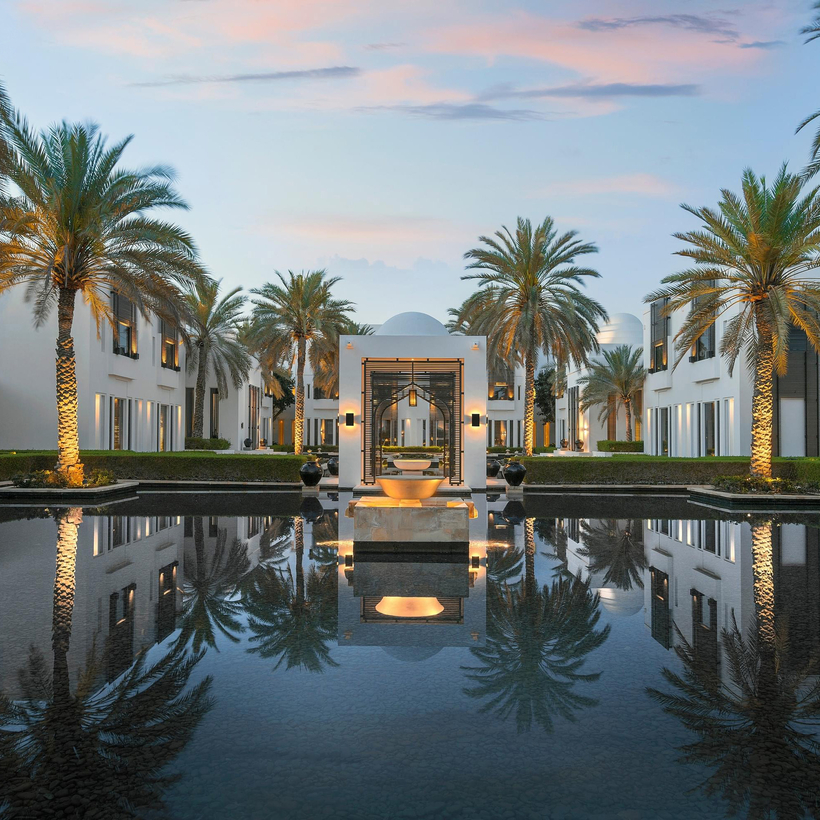The Chedi Al Bait hotel, in Sharjah, a United Arab Emirate, is so understated that it is barely marked on the road that runs along Sharjah Creek.
But behind its high adobe walls, 66 rooms are spread across four traditional houses, and the new Serai wing occupies two merchant houses that date to the 50s. Its striking wind tower is the backdrop for many Instagram photos, and the Chedi does a brisk business in cultural events, which manage to thrum without the lubrication of alcohol.
After checking in, it’s worth venturing out to walk off the jet lag. Start at the restaurant and concept store Bait Elowal, the latest venture of Her Excellency Sheikha Bodour bint Sultan Al Qasimi, the daughter of Sharjah’s longtime ruler. As an homage to the Silk Road and the city’s heritage as a trading post, it sells everything from bundles of sage and art books to cashmere stoles.

Over lunch, my traveling companions and I shared plates of balaleet, a cardamom-spiced omelette, with herb flatbreads amid the birdsong of the most glamorous tiled courtyard in the Heart of Sharjah, which is the romantic name for the center of town.

This restored district is among the largest and most expensive preservation projects on the Arabian Peninsula. Supermarkets, high-rises, and new highways continue to spring up beyond the fortress walls.
Within them, it’s a different story. The covered souk forks into cool alleyways, and stylish visitors wander in and out of museum homes carved out of gypsum and baked earth. Their leafy, shaded courtyards invoke nostalgia for the Arabia of yesteryear, before the discovery of oil and the stratospheric wealth that followed.
The Chedi experience continues in Oman. Just across the border from Sharjah, it’s the oldest independent state in the Arab world, and is similarly steeped in tradition while re-inventing itself in an increasingly post-oil economy.

In just a few decades, Oman’s medieval isolationism and tribalism have given way to thriving tourism that has doubled since the Chedi Muscat, which opened in 2002 on the Al Grubra beach, became the country’s first internationally known resort. While skyscrapers are still prohibited, a stretch of rugged coastline running 30 miles from Muscat to Bandar Khairan is now being developed into a lineup of luxury hotels.

But Jean-Michel Gathy’s design of the Chedi Muscat remains timeless. The dark, domed entrance feels like something out of an opium dream, enhanced by the frankincense-scented air. Reflective marbled floors approximate the sensation of walking on water. As a counterpoint to the desert heat, irrigation channels pool into lotus-fringed lakes that spout into fountains that flow beneath stepping-stone walkways.
Bizarrely, for a hotel on the sea, the beach is not the main event. Even the armies of seagulls turn their backs on the Gulf, where an array of supertankers transport much of the world’s crude oil. Sunbeds face toward the hotel rather than toward the water, in a challenge to the Western mindset, which is restlessly craving new horizons.

The hallmark of Chedi’s hotels is a call to stillness, a bid to look inward—a hint that the riches of an inner life are not always evident to the outside world. With its gardens full of bulbuls and doves, contained by clipped arbors and low white bougainvillea hedges, the Chedi redefines the ideal of a desert oasis.
The writer was a guest of the Chedi Al Bait and the Chedi Muscat
Catherine Fairweather is a West Country of England–based writer


